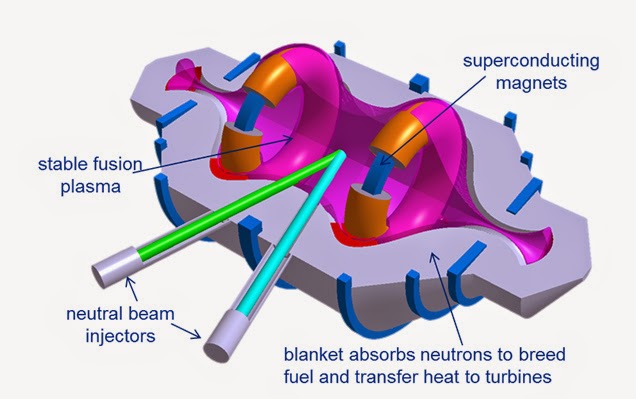Uncategorized
Disruptive innovators and missteps
As a company trying to take on the big boy incumbents it is paramount to avoid the types of mistakes that will greatly effect your adoption rate. Sling was making some major headway in the market and enjoying a good buzz around its product. All until the march madness mishap that is talked about here. Is this ultimately going to end up fatal for sling? The biggest draw of the product was the fact that you wouldn’t have to miss the big events playing on your TV again, well if that is no longer a guarantee what will become of Sling?
Here is the article let me know what you think.
http://www.theverge.com/2015/4/5/8348885/sling-tv-ncaa-finals-problems-watching
Disruptive Change: Are You Ready?
Disruptive technological change is changing constantly and changing the way we live and do business. According to Forbes, “we’ve seen more technical innovation in the past three to four years than we saw in the previous 50.” In a few years almost anything you can think of is going to be accessed through the internet. Eventually there will be an ingestibles where you can swallow to track your biometrics and send the data directly to your smartphone and maybe even your physician. Forbes stated, “n the not-so-distant future, your doctor will be able to tell you, ‘I think you may have a heart attack coming. Let’s get on top of this now.’ That may creep some of you out, which is another challenge. People are going to have to decide if they’re comfortable with some of the things technology will be able to do. Younger generations are likely to accept these technologies faster than those of us who are older.” The article uses autonomous vehicles as an example for future disruptive technology. They also talk about technology changing our careers and possibly depending on the career path it can be gone.
Do you think technology will change our lifestyle 10 years from now? How do you think technology will affect our careers?
http://www.forbes.com/sites/northwesternmutual/2015/04/01/disruptive-change-are-you-ready/
Why It’s Time To Rethink Your Hospital’s Technology
Hospitals have never promoted a technology forward environment. Is it time for a change? I say yes. With the rise of consumer knowledge through social media, consumers can easily search around for the best price and products. This is no different when it comes to dealing with a hospital. Old IT systems in hospitals today are outdated and lack innovation. We’ve heard some ideas of disruptive innovations when it comes to hospitals in class, but what could a hospital gain from changing its systems to be more productive? What type of changes do you feel would be too drastic that the healthcare industry may not need?
http://www.forbes.com/sites/athenahealth/2015/04/13/why-its-time-to-rethink-your-hospitals-technology/
Amazon Launches Machine Learning-As-A-Service
Amazon Web Services is now really starting to utilize it’s EC2 cloud, offering additional services to customers while the company is taking more steps to bring those services closer to the enterprise IT department. What causes the disruption here is that now in some cases, the services offered duplicate or even start to replace some of the older IT functions. Amazon has been steadily expanding what can be done with its cloud computing platform, claiming to have added 516 new features in 2014. One of the most interesting that I have read about was one introduced at its Amazon Summit in San Francisco and is a service not likely to be found in existing IT departments: machine learning.
There are many of cloud providers out there, but some give you a lot more to work with on top of the infrastructure than others, and that is what machine learning differentiates by. Gartner’s lead cloud analyst Lydia Leong said it another way: “IT organizations cannot treat infrastructure-as-a-service providers like commodities. In the process of explaining how Amazon is different, it was announced that Amazon’s latest figures for growth in 2014 stand at: Data transfers in its storage services are up 102% in 2014 over the prior year; EC2 compute activity is up 93%.
In short according to Amazon: Amazon Machine Learning is a managed service that analyzes a user’s historical data to look for patterns and deploy predictive models. It can examine customer data and find patterns of likely customer turnover or churn. It can find typical issues in customer support. It can isolate and detect the patterns of problem transactions. Machine Learning is used to make 50 billion predictions a week on Amazon.com. Now it is making the Machine Learning API and developer’s guide in the form of wizards available as another Amazon service. It will truly be interesting to see how businesses will take machine learning and make it their own in the future. It has clearly given Amazon a positive leverage to insight in their customers, so watching how other businesses will utilize the infrastructure will be ver thrilling.
To read more on the technology visit http://www.informationweek.com/cloud/infrastructure-as-a-service/amazon-launches-machine-learning-as-a-service/d/d-id/1319868
Lockheed Martin’s Claims Sustainable Fusion is Within Its Grasp

Lockheed Martin Claims Sustainable Fusion is Within Its Grasp
Skunk Works Reveals Compact Fusion Reactor Details
Lockheed Martin’s New Compact Fusion Reactor Might Change Humanity Forever
In February, Lockheed Martin’s Skunk Works team made a bold announcement: they are 5-10 years away from successfully creating and commercially selling compact fusion reactors (CFRs). These devices are conceptually safer, cleaner, and more powerful than much larger nuclear systems that rely on nuclear fission. CFRs use water for fuel, produce byproducts that are safe, and releases no air pollution. These devices are scalable, so they can be used as the power source for airplanes and space ships, for which they could fly indefinitely. A CFR that is the size of 23 x 42 feet could produce enough energy to power a large cargo ship or an 80,000-home city. If Lockheed Martin can actually make this work, then, as so many people are saying, it will be a revolutionary and transformative step for humanity.
It’s clear that such a device would be a huge disruptive innovation. To create a cheap, portable, more powerful, safe and clean energy source would significantly affect several industries, especially the energy, oil and gas, and environmental industries. I think would be several types of disruptive innovations, including low-end, sustaining, and new-market innovation. This would be a low-end innovation because using a CFR would be cheaper than using, say, oil and gas for your primary energy source. It would also reduce the risk of catastrophic nuclear disasters (think Fukushima). This would be a new-market innovation because, well, a fusion reactor has never been created before. It may be performing the same function as other energy sources, but it will create new industries around it. And it will be a sustaining innovation for the reason mentioned earlier: it’s performing the same function of generating energy.
What do you guys think about these Lockheed Martin’s announcement? Is it as revolutionary as they purport it to be, or is it overhyped? Do you think it would be a major disruptive innovator, or might it lose out to legal opposition from the current energy and oil and gas industries? What other industries do you think would be affected by this technology? Let me know what you think!
“Why You Should Care About Periscope, Twitter’s New Live-Streaming App”

So after Meerkat Twitter released its own live streaming capabilities. The question now is, is this a fad or the next thing is social media. One of the most interesting things about this article is the move by Twitter to remove Merrket access to it’s social graph. “The move blocked people from bringing their followers and people they were following on Twitter into Meerkat, thereby limiting the app’s ability to grow. Nevertheless, Meerkat announced Thursday that it had raised $14 million in venture capital funding.”Timothy Stenovec 2015) This is a prime example of the moves that incumbents use to try to combat the new competition entering the market.
Here is the article: “Why You Should Care About Periscope, Twitter’s New Live-Streaming App”
A Real Rival to Cable TV…For a Price
PlayStation Vue Review: A Real Rival to Cable TV…For a Price – WSJ
Sony presents PlayStation Vue that allow the uses to stream live TV and DVR in the cloud. It is hard to really determine where Sony was going with this new idea seeing how it can touch so many companies and markets.
What market do you see this disruption falling under? Why?
With the price being so high I do not see how it would be able to push TiVo out of the picture, but it is the first real internet service to threaten cable TV. Vue allows you to also DVR to the cloud which means no more worrying about running out of storage. Pretty awesome innovation, and will be interested to see how PlayStation hones in on the application, price, and easy of use.
Regulatory Disruption
So I found this interesting article by Ron Klain, a high level aid in both the Obama and Clinton administrations. The article tackles start-ups up coming battle with regulators in Washington. As we discussed disruptive innovations in class one of the topics we touched on was the affect of laws on businesses. The upcoming debates in Washington have large ramifications in multiple industries. Some proposals run the risk of completely killing industries that are trying to get of the ground (like drones, and financial technology). Other possible laws in regards to privacy/cyber security and medical devices see new regulations of possibly exploding a new start-up craze.
http://techcrunch.com/2015/03/22/the-regulatory-fault-line-for-startups-moves-to-washington/
Here is the link to the article. What do you see happening in these fields? Are drones our future or are they too risky? Or after all the recent hacking headlines will the government crackdown and open a large cyber security market?
9 Things You Should Tell Your Boss At Your Next Performance Review
I read an article in Forbes that talks about 9 things you should tell your boss at your next performance review. Forbes asked 9 entrepreneurs from the Young Entrepreneur Council what they wish their employees would tell them at their next performance review.
1) What makes you happy
2) How you want to grow
3) What you would like to work on
4) How you picture the future
5) How do you want to contribute to the company’s success
6) What you need to do for your best work
7) Which new technologies would work a lot better
8) What you want your boss to stop doing
9) What is not working, and how to make it better
These questions will help you in your next performance review with your boss and it shows you are dedicated to the success of the company and it also shows you are a dedicated employee. These questions will also help your boss become a better leader.
What do you think about this article and these questions? Do you think these questions should be answered by your boss after you have been with the company for a couple of years?
http://www.forbes.com/sites/dailymuse/2014/03/12/9-things-you-should-tell-your-boss-at-your-next-performance-review/
Autonomous Attack Aircraft

For my disruptive innovation case I had the topic of autonomous vehicles. In an article I found on justsecurity.org, Michael Horowitz and Paul Scharre discuss three areas of concern related to fully autonomous aircraft. First area of concern is related to accountability. If autonomous aircraft fail to do their job properly, who’s at fault? Another issue is the off-loading of moral responsibility for killing, which could lead to unnecessary deaths. Finally, if an autonomous aircraft became out of control, there could be serious damage inflicted to innocent people or casualties to friendly fire. Because of these concerns, many people advocate a level of human control over these aircraft because humans can make better informed decisions for a particular situation. Because of this, there is a debate over what is the right amount of autonomy and human control.
How much human control do you think is necessary and what functions should be autonomous in an attack aircraft? Or, do you think it is possible to have a fully autonomous attack aircraft? If yes, how would you mitigate the concerns mentioned above?








